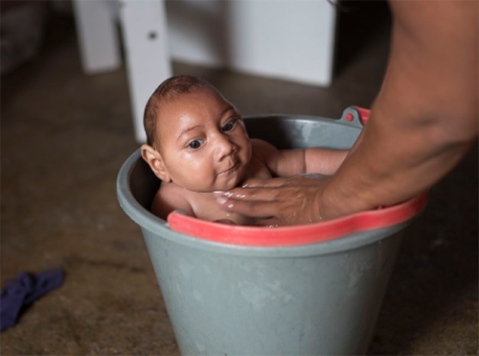The outbreak of Zika virus in Central and South America is of immediate concern to pregnant women in the region, but for some experts the situation is a glimpse of the sort of public health threats that will unfold due to climate change.
“Zika is the kind of thing we’ve been ranting about for 20 years,” said Daniel Brooks, a biologist at University of Nebraska-Lincoln. “We should’ve anticipated it. Whenever the planet has faced a major climate change event, man-made or not, species have moved around and their pathogens have come into contact with species with no resistance.”
It’s still not clear what role rising temperatures and altered rainfall patterns have had on the spread of Zika, which is mainly spread by mosquitos; the increased global movement of people is probably as great an influence as climate change for the spread of infectious diseases. But the World Health Organization, which declared a public health emergency over the birth defects linked to Zika, is clear that changes in climate mean a redrawn landscape for vector and water-borne diseases.
According to WHO, a global temperature rise of 2-3C will increase the number of people at risk of malaria by around 3-5%, which equates to several hundred million. In areas where malaria is already endemic, the seasonal duration of malaria is likely to lengthen. Aedes aegypti, the mosquito that carries Zika and other diseases, is expected to thrive in warmer conditions.
As climate change reaches almost every corner of the Earth’s ecology, different diseases could be unleashed. Increased precipitation will create more pools of standing water for mosquitos, risking malaria and rift valley fever. Deforestation and agricultural intensification also heightens malaria risk while ocean warming, driven by the vast amounts of heat being sucked up by the oceans, can cause toxic algal blooms that can lead to infections in humans.
“We know that warmer and wetter conditions facilitate the transmission of mosquito-borne diseases so it’s plausible that climate conditions have added the spread of Zika,” said Dr Diarmid Campbell-Lendrum, a lead scientist on climate change at WHO.
“Infectious agents in water will proliferate with more flooding. It’s clear that we need to strengthen our surveillance and response to a range of diseases. Globalization, the movement of people, is an important factor too. In a world where we are disrupting the climate system we’ll have to pay the price for that.”
WHO estimates that an additional 250,000 people will die due to climate change impacts – ranging from heat stress to disease – by 2050, but Campbell-Lendrum said this is a “conservative estimate”.
————
is there nothing CO2 cannot do?
now its caused the zkia virus..even though the patent ownership for the virus was created in 1947..via the rockefeller foundation..wow!
“Increased precipitation will create more pools of standing water for mosquitos, risking malaria and rift valley fever.”
increased rain?..thats strange..i always thought global warming meant no rain..because of heat..
“Zika is the kind of thing we’ve been ranting about for 20 years,” said Daniel Brooks, a biologist at University of Nebraska-Lincoln. “We should’ve anticipated it.”
even a broken clock is right two times every 24 hours..
